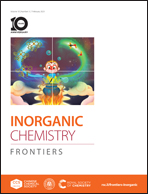Anchoring polysulfides via a CoS2/NC@1T MoS2 modified separator for high-performance lithium–sulfur batteries†
Abstract
It is well known that lithium–sulfur batteries (LSBs) have many features including high theoretical specific capacity and excellent theoretical energy density, but their performance in practical applications is hampered by their undesirable shuttle effect and insulation properties. At the same time, due to slow redox kinetics during the charge and discharge processes, the battery capacity decays rapidly and the utilization of sulfur is limited. To solve these problems, we design and fabricate metal–organic framework-derived CoS2/NC@1T MoS2 to modify a polypropylene (PP) separator. The CoS2/NC@1T MoS2 composite is synthesized by a simple hydrothermal process, and then coated on a conventional PP separator to improve the reversible capacity of LSBs. Thanks to the synergistic effect among polar CoS2, lamellar MoS2, and conductive nitrogen-doped carbon (NC), the as-prepared separator coating limits the dissolution of soluble polysulfides, and the strong adsorption alleviates the shuttle effect and significantly promotes the redox kinetics of polysulfides. What's more, the transport path of lithium ions and electrons is effectively shortened, and the capacity retention rate of LSBs is enhanced. The first discharge capacity of a lithium–sulfur battery with a CoS2/NC@1T MoS2 separator reaches 1421 mA h g−1 at 0.1 C. And after 100 cycles, a reversible capacity of 972 mA h g−1 is obtained. A discharge capacity of 616 mA h g−1 is still maintained after 500 cycles at 1 C, and the average capacity attenuation rate per cycle is only 0.07%.



 Please wait while we load your content...
Please wait while we load your content...